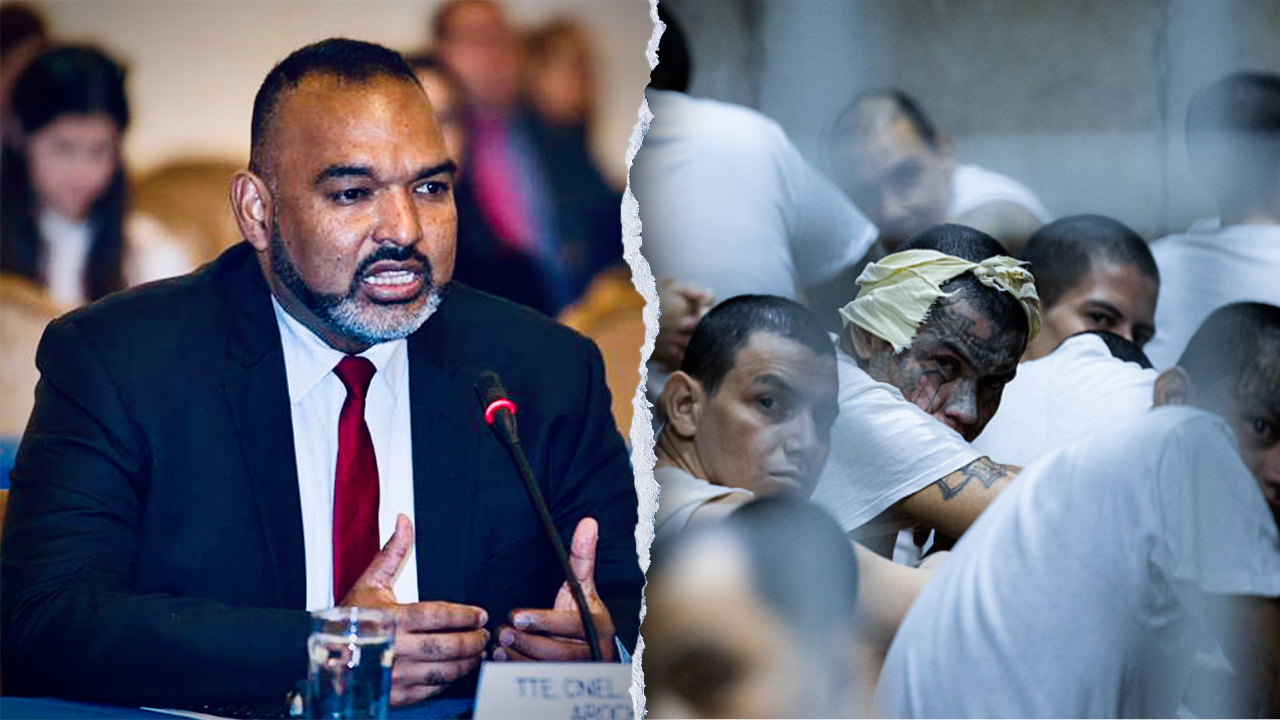Science
How a 'light bulb moment' in an Arkansas barn made Ryan Crouser a shot put juggernaut
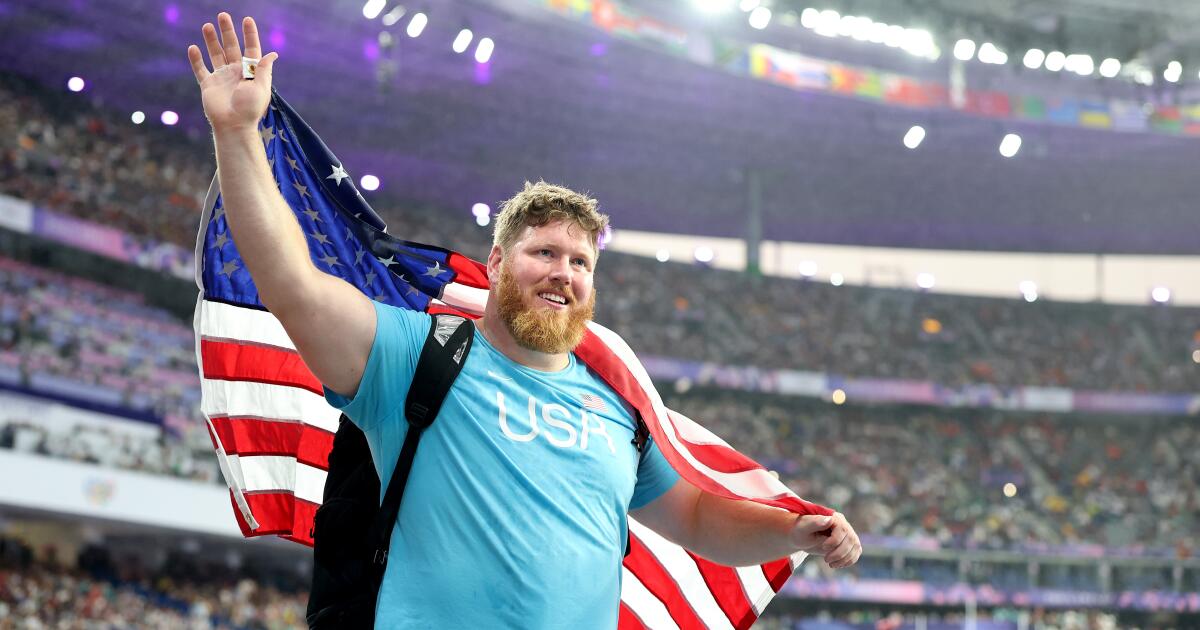
It sounds like the plot to a cheesy black-and-white movie from the 1940s.
A lunk of a guy goes out to the barn behind his house every night and tosses a metal ball as far as he can. Over and over. He tries shifting his feet, turning his body in different directions, tinkering.
And, just like that, he revolutionizes the sport of shot put.
But this isn’t a Hollywood story. Ryan Crouser used his innovative “Crouser Slide” to make history at the 2024 Paris Olympics this weekend, joining a select group of athletes who have dominated their event thoroughly enough to win gold at three consecutive Games.
The 31-year-old native of Boring, Ore., called it “kind of a testament to the total dedication and hard work that has gone into it … it’s a 365-day a year job.”
With all the superstars competing here in the last few days — gymnast Simone Biles, swimmer Katie Ledecky, sprinter Noah Lyles — it might be easy to overlook Crouser. It would also be a mistake.
His story exemplifies the best aspect of the Olympics: The range of obscure and semi-obscure sports filled with athletes who devote their lives to something with no guarantee of fortune or fame.
To fully appreciate what Crouser accomplished, it helps to know more about the shot put.
The only way to heave a 16-pound ball more than 70 feet is to generate momentum by spinning your way to the release, which can be especially tricky for very large people trapped inside a seven-foot ring.
So it makes sense that, despite all their girth and grunting, shot putters tend to be science geeks.
Rather than focus on brute force, they obsess over the physics of lateral velocity, rotational radius and acceleration paths. The biomechanically optimal angle of release — 36 degrees? 38 degrees? — can be a topic for debate.
“So it’s constantly changing and evolving,” Crouser says. “Kind of under the assumption of how do we maximize potential energy creation while minimizing room for error.”
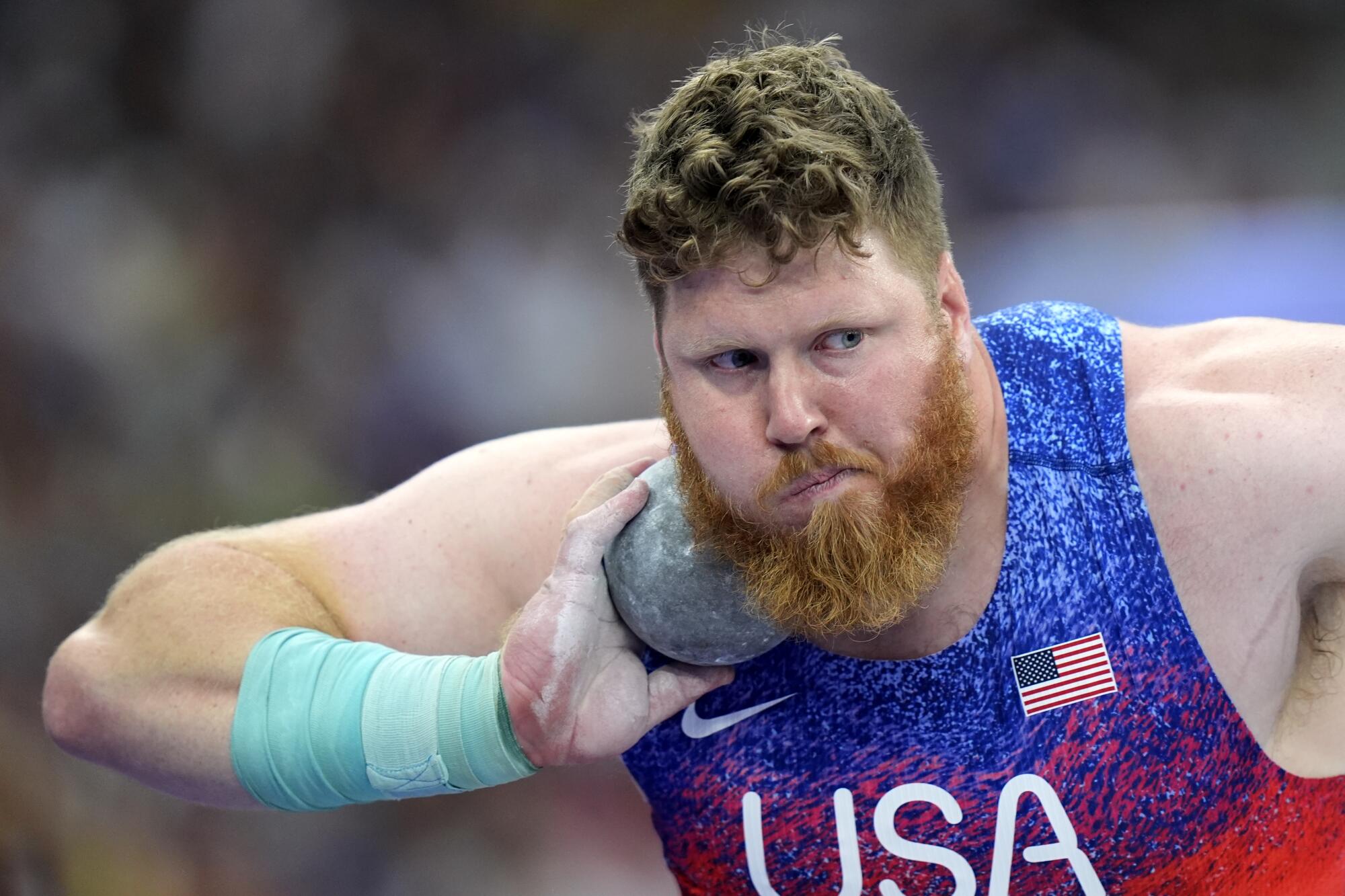
American Ryan Crouser competes in the men’s shot put final at the Paris Olympics on Saturday.
(Matthias Schrader / Associated Press)
Throwing runs in his blood. His father, Mitch, was an alternate on the 1984 U.S. Olympic discus team and uncle Brian threw javelin at two Games. After excelling at shot put in high school, Crouser won four NCAA championships for the University of Texas.
His first gold at the 2016 Rio de Janeiro Games came shortly after graduation.
In a sport where many top athletes stand about 6 feet tall, Crouser uses his 6-foot-7 frame for more leverage and force on throws. But height also makes him vulnerable to committing a foul by stepping outside of that claustrophobic ring.
In his early years at the international level, he employed a fairly standard technique, working to control his body by moving precisely. In 2021, he broke Randy Barnes’ 31-year-old record with a throw of more than 76 feet at the U.S. Olympic trials, then won his second gold at the Tokyo Games.
Still, he wasn’t content.
“I feel like I experimented for a number of years just with different techniques,” he recalls. “I try to think of a rational explanation for why it would help my throw and then I’ll implement it.”

The “Fosbury Flop,” the back-roll technique made famous by Dick Fosbury at the 1968 Summer Olympics, forever changing the high jump, ranks as track’s best-known stylistic breakthrough. Though subtler, the “Crouser Slide” has been revolutionary.
Restless for something better, the self-coached Crouser searched the internet for information and applied concepts from upper-level engineering courses he took in college before switching his major to economics.
All his tinkering, spread across thousands of practice throws, led to a “light bulb moment” in that Arkansas barn in December 2022. It was about 8 p.m. and he recalls thinking “Yeah, let’s try something new just to engage myself because shot put can be extremely monotonous.”
He focused on altering the conventional starting point, which has shot putters standing at the back of the ring, facing away from the field. Crouser shifted over to the right side of the circle, creating room to his left.
The adjustment allowed him to start his motion with a quick “slide step” to the left. It made his spin a little faster and gave his right leg more space to swing around. As he explained: “Speed is king in the shot put.”
Speed can also be unwieldy, so there were problems with consistency. But within a few months, at a springtime meet in Los Angeles, he became the first man to throw beyond 77 feet.
“It’s good for the sport,” rival Tom Walsh told reporters in his home country of New Zealand. “But we’ve got to keep our end of the bar up and keep pushing him, keep challenging him, because when someone is too dominant, the sport gets a bit dull.”
During the past 10 or so years, Crouser has amassed five of the top six — and 14 of the top 25 — throws ever.

As important as technique and mental approach can be, the shot put remains — at its core — physical and brutal.
“Throwing a 16-pound ball for a living beats you up,” Crouser said.
Doctors found two blood clots in his leg last summer. Cleared to fly at the last moment, he traveled to Budapest to defend his world championship.
Since then, a torn pectoral muscle and nagging elbow injury have forced him to adjust his practice routine. Sometimes he throws hard and takes a few days off, other times he strings together light workouts.
“I have had a bit of difficulty recognizing that I am getting older,” he says. “It makes me cherish this Olympic experience even more because I can see that I cannot do this forever.”
2024 Paris Summer Olympic Games
Heading into Saturday night’s final in Paris, it wasn’t clear if the elbow could hold up for six rounds. Rather than build his distances gradually, Crouser chased big throws early — a gamble — hoping his opponents might tighten up if they fell behind.
Throwing 74 feet 3 inches on his first attempt, he raised his arms and worked the crowd. His lead had widened by the third round, at which point nature intervened.
A storm blew in, drenching the stadium and making the shot put ring treacherously slippery. One after another, competitors started attempts only to have their feet slip and their throws fall harmlessly. U.S. teammate and longtime rival Joe Kovacs unleashed a gutty try in the final round but, for a third consecutive Olympics, finished with silver.
Speaking in the mixed zone, Crouser reflected on years of eating right, getting nine hours of sleep each night and forgoing alcohol except for a 10-day vacation at the end of each track season. He mused about winning a fourth gold at the 2028 Summer Games in Los Angeles.
If his body lasts. If he can keep thinking up improvements for his technique.
A reporter asked him about a moment from earlier in the evening. Before the finals, the shot putters emerged from a tunnel, one by one, pausing in front of a television camera. Crouser dropped to one knee in an homage to French sculpture.
His pose? The Thinker.

Science
A new COVID subvariant spreads rapidly as Trump pivots away from vaccines
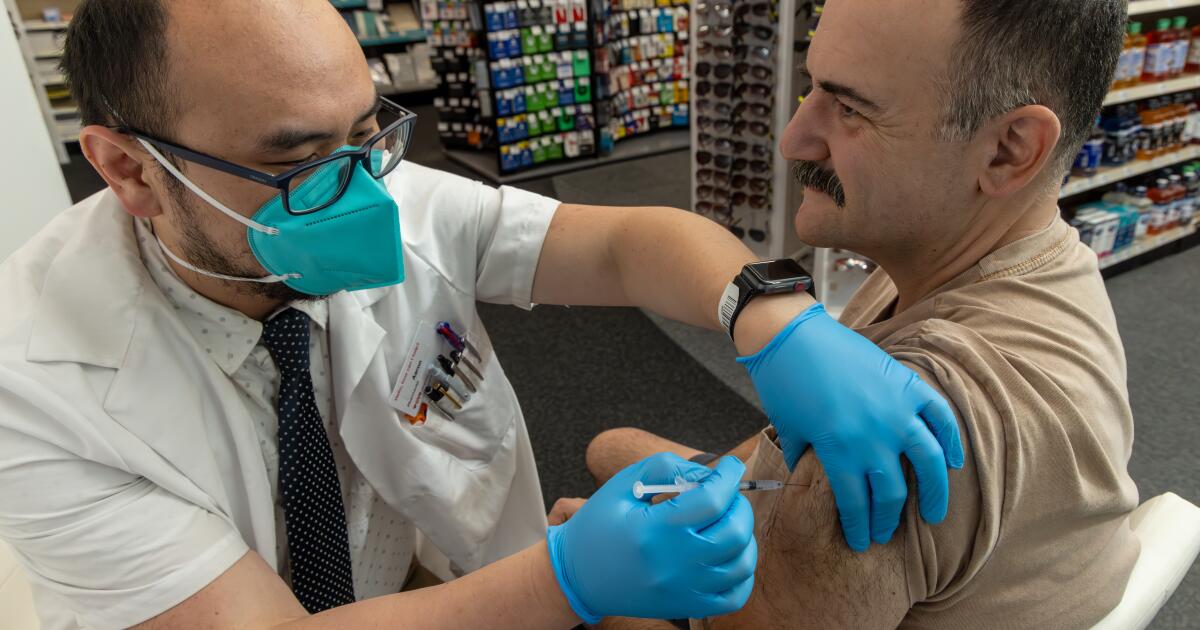
A new, highly transmissible COVID subvariant has been detected in California — heightening the risk of a potential summer wave as recent moves by the Trump administration threaten to make vaccines harder to get, and more expensive, for many Americans, some health experts warn.
Health and Human Services Secretary Robert F. Kennedy Jr. announced this week that he was rescinding the federal government’s recommendation that pregnant women and healthy children get immunized against COVID, effective immediately.
Dr. Marty Makary, commissioner of the U.S. Food and Drug Administration, also said the agency will no longer routinely approve annually formulated COVID-19 vaccinations for healthy people under age 65.
“We simply don’t know whether a healthy 52-year-old woman with a normal BMI who has had COVID-19 three times and has received six previous doses of a COVID-19 vaccine will benefit from the seventh dose,” Makary, along with another FDA official, Dr. Vinay Prasad, wrote in the New England Journal of Medicine this month. “This policy will compel much-needed evidence generation.”
However, some experts say mandating more extensive testing could delay vaccine access for many, as those efforts may not even be complete until after the end of the upcoming winter flu-and-COVID season.
“Pregnant women, infants and young children are at higher risk of hospitalization from COVID, and the safety of the COVID vaccine has been widely demonstrated,” Dr. Sean O’Leary, chair of the American Academy of Pediatrics’ Committee on Infectious Diseases, said in a statement.
The U.S. Centers for Disease Control and Prevention has said that, in general, getting an updated vaccine provides children and adults additional protection from COVID-related emergency room and urgent care visits.
The recent federal changes, according to some experts, could also prompt private insurance companies and government insurers to stop paying for COVID shots for wide segments of the population, including babies and children.
Absent a recommendation by federal officials, Americans could end up paying the entire cost of a vaccine, experts say. The out-of-pocket cost for a COVID vaccine at CVS, for instance, is $198.99.
Although the emergency phase of the pandemic has long since passed, authorities note COVID remains a public health concern. A relatively new subvariant has been spreading in Europe and Asia, “particularly Hong Kong, Taiwan, other countries, Japan, etc.,” said Dr. Peter Chin-Hong, a UC San Francisco infectious diseases expert.
That subvariant, NB.1.8.1, was first documented in January and has since been detected in California, including in Los Angeles County and the San Francisco Bay Area. The World Health Organization designated it a “Variant Under Monitoring” last week.
NB.1.8.1 has grown exponentially worldwide in recent weeks. The Omicron subvariant represented 10.7% of genetically analyzed viral samples worldwide for the week ending April 27, WHO data show. That was up sharply from the week ending April 6, when the subvariant accounted for 2.5% of samples worldwide.
“While still low numbers, this is a significant rise,” the WHO said, adding that there was a “concurrent increase in cases and hospitalizations in some countries where NB.1.8.1 is widespread.”
NB.1.8.1 isn’t yet prevalent enough in the United States to be publicly tracked by the CDC. Another strain, LP.8.1, accounted for an estimated 73% of coronavirus specimens nationally for the two-week period ending Saturday.
Data suggest NB.1.8.1 does not cause more severe illness, “but it is more transmissible, at least from what we’re seeing around the world and also from lab experiments,” said Dr. Yvonne Maldonado, an infectious-disease expert at Stanford University.
In Taiwan, a top health official told reporters that an NB.1.8.1-fueled outbreak was “continuing to rise rapidly, with a sustained increase in severe and fatal cases,” the Central News Agency reported, prompting a shortage of COVID testing kits. Health officials said a factor in Taiwan’s surge was the lack of a major COVID wave over the winter, and forecast that the island’s current spike may not peak for another four to six weeks.
NB.1.8.1 has seen increased prevalence in each of the three WHO regions that still consistently share genetic analysis of COVID samples — the Western Pacific (which includes East Asia, parts of Southeast Asia, and Australia); Europe; and the Americas.
The rate at which COVID tests are coming back positive in Los Angeles County has slightly increased over the past few weeks, although the overall positive rate remains low, at 3.5%, according to the county Department of Public Health. Coronavirus levels detected in the county’s wastewater have increased by 6% in the last three weeks, but also remain relatively low and are about one-eighth of the peak in the summer of last year.
Although California experienced a mild winter season — a first of the COVID era — that followed a powerful summer spike that was the strongest in years.
Many experts and officials have touted available COVID vaccines as effective both in warding off infection and in lessening the severity of symptoms. However, the need for otherwise healthy individuals to roll up their sleeves has been a matter of debate.
In a video message Tuesday on X, Kennedy — a noted vaccine skeptic — said that he “couldn’t be more pleased to announce that, as of today, the COVID vaccine for healthy children and healthy pregnant women has been removed from the CDC recommended immunization schedule.”
Experts said they could not recall a time when a political appointee circumvented a well-established process of making vaccine recommendations, which typically involves panels of scientists advising the FDA and CDC.
“It’s kind of chilling,” Chin-Hong said. “It’s out of step with the system we’ve learned to trust and follow.”
In a statement to The Times, the L.A. County Department of Public Health urged Kennedy to listen to experts in the field — including from the CDC’s Advisory Committee on Immunization Practices, which is scheduled to meet next month — “before decreasing access to any vaccine.”
As of Thursday, the CDC still had the long-standing vaccine recommendations on its website: Everyone ages 6 months and older should get the most recent COVID-19 vaccine, officially known as the 2024-25 version, which was introduced in September. The CDC also recommends seniors ages 65 and up get a second vaccine dose six months after their first.
In a statement, the California Department of Public Health said that it supports the current expansive recommendation for COVID vaccines, and that it “will continue to follow the federal conversation through this dynamic situation.”
“Staying up to date with COVID-19 vaccination can reduce the risk of disease, especially more severe cases that result in hospitalization or death,” the department added.
The Washington Post reported Wednesday that the CDC did not know of Kennedy’s directive until he posted it, and officials have been “scrambling to find out what it meant.”
Experts who spoke with The Times warned the practical effect of the edict — if it becomes official — could be far more costly vaccines for affected groups.
“If vaccines are not recommended by the CDC, insurance companies would NOT be required to cover the cost,” the L.A. County Department of Public Health said in a statement.
As a result, the vaccines may be less accessible to healthier people who still want them — perhaps because they live or work with elderly or other higher-risk people, they’ve had severe COVID illness before, or they want to protect themselves against the latest subvariant, the agency said.
If the FDA withholds a license for an updated COVID vaccination for younger, healthier adults, this group “would not be able to receive it unless their provider chooses to give it ‘off label,’” the county said.
When asked whether healthy pregnant women and healthy children can still get vaccinated at its pharmacies, Walgreens said its teams operate “in full compliance with applicable laws.” CVS said its locations “follow federal guidance regarding vaccine administration and are monitoring any changes that the government may make regarding vaccine eligibility.”
Kaiser Permanente Southern California said it was aware of potential changes, but noted no new formal guidance has yet been issued. As a result, Kaiser is continuing to follow existing guidance, which recommends the shots for everyone.
The L.A. County Department of Public Health said that as of Wednesday, “pregnant women and healthy children can get vaccinated for COVID-19,” according to existing recommendations from an advisory panel and the CDC.
Chin-Hong noted there were 150 pediatric deaths in the U.S. from COVID-19 in a recent one-year period. That’s in the same ballpark as the 231 pediatric flu deaths recorded this season, and federal health officials recommend everyone ages 6 months and older get an annual flu shot.
“Most people would agree that kids should be targeted for flu vaccines. It seems kind of weird to have COVID as an outlier in that respect,” Chin-Hong said.
In the video published this week, Makary said that “most countries in the world have stopped recommending the vaccine for children.”
Maldonado, however, said the U.S. doesn’t use other nations’ standards to dictate vaccine recommendations. The U.S., for instance, recommends other types of vaccines that have a lower prevalence than COVID that people want to get, Maldonado said, such as the meningococcal vaccine for children to guard against a serious bacterial disease that can infect the brain and spinal cord and cause death within hours.
The effect of a recommendation also varies by country. Canada, for instance, recommends updated COVID vaccines for seniors and other people who meet certain criteria, such as if they’re pregnant or are a healthcare worker. But the country’s universal healthcare system still allows everyone ages 6 months and older to get an updated COVID vaccine.
Although it’s true that children overall are at lower risk of developing severe COVID illness, those under 6 months of age “have the same risk of complications as the 65-year-old-plus population in this country,” said Stanford’s Maldonado, who also serves on the CDC’s Advisory Committee on Immunization Practices.
Among children eligible for vaccination, COVID-associated hospitalization rates are highest for those ages 6 months to 4 years, according to the CDC.
“So are children going to be the highest risk group? No, they’re not. But would you want to protect your child from a disease that could potentially put them in the hospital and get them on a ventilator? Yes, I would say that I would want to make that choice for myself. And why not allow the parent to make that choice?” Maldonado said.
The CDC says COVID vaccination during pregnancy builds antibodies that can help protect the baby; studies have also shown that vaccinated moms who breastfeed have protective antibodies in their milk, which could help protect their babies.
There have been an estimated 260,000 to 430,000 hospitalizations attributed to COVID since October, causing “an enormous burden on the healthcare system,” Dr. Fiona Havers, a medical epidemiologist with the CDC, said at a recent public meeting. There have also been an estimated 30,000 to 50,000 COVID-19 deaths over the same time period.
“It is a major cause of morbidity and mortality, particularly in older adults, but it does affect other people, particularly those with underlying conditions, in younger age groups.”
COVID is also a major cause of pediatric hospitalizations, even among otherwise healthy children, she said.
“If there’s a summer wave this year, we’ll be seeing it in children being hospitalized with COVID as well,” she said.
Science
'It's pretty bleak': A warming planet is poised to get even hotter, forecasters warn

As hot, dry and disastrous as the last few years have been, it appears that the chaos caused by a warming planet is just getting started.
Though the hottest year in nearly two centuries was recorded only last year, the world will probably shatter that record yet again by 2029, according to a new report from the World Meteorological Organization, the climate and weather arm of the United Nations.
There is a very good chance that average warming over the next five years will be more than 2.7 degrees Fahrenheit, or 1.5 degrees Celsius, above preindustrial levels, the cap established by the Paris Agreement to ward off the worst consequences of climate change. There’s an even better chance that at least one of those years will be more than 2.7 degrees above the 1850 to 1900 average.
That means we can expect many more days when the weather feels freakish and far more natural disasters that cost people their homes, health or lives.
“It’s pretty bleak,” said Mike Flannigan, a fire scientist at Thompson Rivers University in British Columbia. “My fear is that [the coming years] will be even warmer than they suggest, and the impacts will continue to catch us by surprise and be more severe than we expect across the world, including the American West.”
In the western U.S. states, including California, those effects most probably include drought, heat waves and longer fire seasons with more intense wildfires, climate scientists said.
“As the globe has warmed thus far, the western U.S. has warmed as well, but without increases in precipitation that compensate for the drought- and wildfire-promoting effects of warming,” UCLA professor Park Williams said.
Last year, Williams examined 1,200 years of geological records and found that the previous 25 years were probably
the driest quarter of a century since the year 800. He sees no reason why that trend won’t continue.
“Given that there is not even a whiff of a hint that our global greenhouse gas emissions are going to slow in the next few years, then it appears virtually certain that the globally averaged temperature will continue to set new records every few years or so, just as it’s done over the past four to five decades,” Williams said.
The projections in the U.N. report are based on more than 200 forecasting models run by scientists at 14 research institutes around the globe, including two managed by the U.S. National Oceanic and Atmospheric Administration.
The report found an 80% chance that at least one year in the 2025 to 2029 period will surpass 2024 as the warmest year on record, and an 86% chance that at least one of those years will exceed the 2.7 degrees warming target.
It estimated a 70% likelihood that average warming over that period will be more than 2.7 degrees, though total warming averaged over 20 years — the Paris Agreement standard — will probably remain below that threshold.
“Unfortunately, this WMO report provides no sign of respite over the coming years, and this means that there will be a growing negative impact on our economies, our daily lives, our ecosystems and our planet,” Ko Barrett, deputy secretary-general of the World Meteorological Organization, said in a statement.
The consequences of warming will probably vary widely across the world, the report found: rapid thawing of Arctic sea ice, drier seasons in the Amazon, excess rain in places such as Alaska, northern Europe and the Sahel in north-central Africa.
Hotter temperatures are more effective at evaporating water out of plants and soil, leading to droughts and failed crop seasons. At the same time, a warmer atmosphere holds more moisture, which increases the chance of flood-inducing downpours and hurricanes.
Episodes of climate “whiplash” — rapid swings between wet-to-dry and dry-to-wet conditions — are also growing more frequent and intense because of rising global temperatures.
The devastating Palisades and Eaton wildfires in January erupted after such a period. Unusually heavy rains in 2023 led to an explosion of new vegetation, which dried out and turned into kindling during an exceptionally dry 2024.
The same week that the fires began, government agencies in the U.S. and around the world confirmed that 2024 was the planet’s hottest year since recordkeeping began in 1880. It was the 11th consecutive year the record had been set.
The U.S. will likely head into this period of climate chaos with a drastically reduced ability to forecast disasters and head off their worst consequences.
Rounds of firings have reduced staffing at NOAA, including in the agency’s National Weather Service. The Trump administration has proposed a $1.5-billion cut to NOAA’s budget in 2026, a 25% reduction from the previous year’s spending.
Those budget cuts are part of a wider turn away from climate mitigation efforts.
The U.S. already had a messy relationship with the Paris Agreement. It withdrew from the international accord just days before President Trump lost his reelection bid in November 2020. The U.S. rejoined when Joe Biden entered the White House in January 2021, but pulled out again when Trump began his second term in January.
Trump has gone even further to roll back U.S. climate science this time.
The phrases “climate crisis,” “clean energy” and “climate science” are among the prohibited terms that federal funding recipients and employees must reportedly strike from websites, reports, regulations and other communications.
In April, the administration dismissed more than 400 scientists and other experts who started writing the latest National Climate Assessment report, a congressionally mandated assessment of the latest climate change science and mitigation progress.
Meanwhile, the warming trend continues. And there’s no withdrawing from the planetary consequences.
“It’s scary. It really is,” Flannigan said. “A lot of people are ignoring this, or [saying] ‘it won’t be in my backyard.’ But it’s going to be in just about everyone’s backyard soon.”
Science
Contributor: Slashing NIH research guarantees a less healthy, less wealthy America

In recent months, funding for biomedical research from the National Institutes of Health has been canceled, delayed and plunged into uncertainty. According to an April STAT News analysis, NIH funding has decreased by at least $2.3 billion since the beginning of the year. KFF Health News reports the full or partial termination of approximately 780 NIH grants between Feb. 28 and March 28 alone. Additional NIH funding cuts loom on the horizon, including proposed cuts to indirect costs.
Amid this volatility, one thing remains clear: NIH grant funding is a valuable, proven investment, economically and in terms of improving human health.
A recent United for Medical Research report shows that in fiscal year 2024, research funded by the NIH generated $94.58 billion in economic activity nationwide, a 156% return on investment. Further, the report shows that NIH funding supported 407,782 jobs nationwide. According to the NIH’s own figures, patents derived from work it has funded produce 20% more economic value than other U.S. patents.
These economic returns — including a return on investment that would thrill any startup or stock investor — cannot begin to capture the impact on individuals, families and communities in terms of increased longevity and higher quality of life.
While it is hard to precisely quantify human health improvements resulting from NIH-funded research, there are proxy measures. As one example, a study published in JAMA Health Forum found that NIH funding supported the development of 386 of 387 drugs approved by the Food and Drug Administration from 2010-19. Many of the approved drugs address the most pressing human health concerns of our time, including cancer, diabetes, cardiovascular disease, infectious diseases and neurological disorders such as Parkinson’s disease.
Many other NIH-funded advancements represent what is now considered common knowledge, such as the relationship between cholesterol and cardiovascular health, or standard practice, such as screening newborns for serious diseases that may be treatable with early medical intervention. But each of these fundamental aspects of contemporary medicine had to first be discovered, tested and proved. They represent what NIH funding can do — and the type of paradigm-shifting advancements in medicine that are now very much at risk.
Consider the biotechnology industry as one such paradigm shift. In the 1970s, Stanley Cohen and Herbert Boyer were the first scientists to clone DNA and to transplant genes from one living organism to another. This work launched the biotechnology industry.
Two decades later, the NIH and the Department of Energy began a 13-year effort to sequence the human genome, including through university-based research grants. In 2003, the consortium of researchers produced a sequence accounting for 92% of the human genome. In 2022, a group of researchers primarily funded by the NIH’s National Human Genome Research Institute produced a complete human genome sequence. This work paved the way for insights into inherited diseases, pharmacogenomics (how genetics affect the body’s response to medications) and precision medicine.
NIH funding has also led to major breakthroughs in cancer treatments. In 1948, Sidney Farber demonstrated the first use of a chemotherapy drug, aminopterin, to induce remission in children with acute leukemia. Before Farber’s research, which was funded in part by the NIH, children with acute leukemia were unlikely to survive even five years.
Over the years that followed, other modes of cancer treatment such as immunotherapy emerged, first as novel areas of inquiry, followed by drug development and clinical trials. NIH funding supported, among others, the development of CAR T cell therapy, which genetically modifies a patients’ own T-cells to fight cancer. CAR T cell therapy has improved outcomes for many patients with persistent blood cancers, and clinical trials are ongoing to discover other cancers that might be treatable with CAR T cell therapies.
For decades, scientists knew that breast cancer could run in families and hypothesized a genetic role. In the 1990s, teams of scientists — supported at least in part by NIH funding — tracked down the BRCA1 and BRCA2 genes responsible for inherited predispositions to breast and other cancers. Today, many people undergo testing for BRCA gene mutations to make informed decisions about prevention, screening and treatment.
These kinds of advancements, along with improvements in detection and screening, have meaningfully reduced cancer mortality rates. After hitting a smoking-related peak in 1991, U.S. mortality rates from all cancers dropped by 34% as of 2022, according to the American Cancer Society. For children with acute leukemias, who had effectively no long-term chance of survival just 75 years ago, the numbers are even more dramatic. The five-year survival rate is now approximately 90% for children with acute lymphocytic leukemia and between 65% and 70% for those with acute myelogenous leukemia.
These examples represent a fraction of the tremendous progress that has occurred through decades of compounding knowledge and research. Reductions in NIH funding now threaten similar breakthroughs that are the prerequisites to better care, better technology and better outcomes in the most common health concerns and diseases of our time.
It is not research alone that is threatened by NIH funding cuts. Researchers, too, face new uncertainties. We have heard firsthand the anxiety around building a research career in the current environment. Many young physician-scientists wonder whether it will be financially viable to build their own lab in the U.S., or to find jobs at research institutions that must tighten their belts. Many medical residents, fellows and junior faculty are considering leaving the U.S. to train and build careers elsewhere. Losing early-career researchers to other fields or countries would be a blow to talent for biomedical research institutions nationwide and weaken the country’s ability to compete globally in the biomedical sector.
The effects of decreased NIH funding might not be immediately visible to most Americans, but as grant cancellations and delays mount, there will be a price. NIH funding produces incredible results. Cuts will set scientific research back and result in losses in quality of life and longevity for generations of Americans in years to come.
Euan Ashley is the chair of the Stanford University department of medicine and a professor of medicine and of genetics. He is the author of “The Genome Odyssey: Medical Mysteries and the Incredible Quest to Solve Them.” Rachel Keranen is a writer in the Stanford department of medicine.
-

 Education1 week ago
Education1 week agoVideo: Columbia University President Is Booed at Commencement Ceremony
-

 Technology1 week ago
Technology1 week agoAMD’s new RX 9060 XT looks set to challenge Nvidia’s RTX 5060
-

 News1 week ago
News1 week agoRead the Full ‘Make America Healthy Again’ Report
-

 Technology1 week ago
Technology1 week agoAre Character AI’s chatbots protected speech? One court isn’t sure
-

 Culture1 week ago
Culture1 week agoHow Manga Megastar Junji Ito Makes Terrifying Series Like ‘Uzumaki’
-

 News1 week ago
News1 week ago'Golden Dome' Missile Shield To Be 1st US Weapon In Space. All About It
-
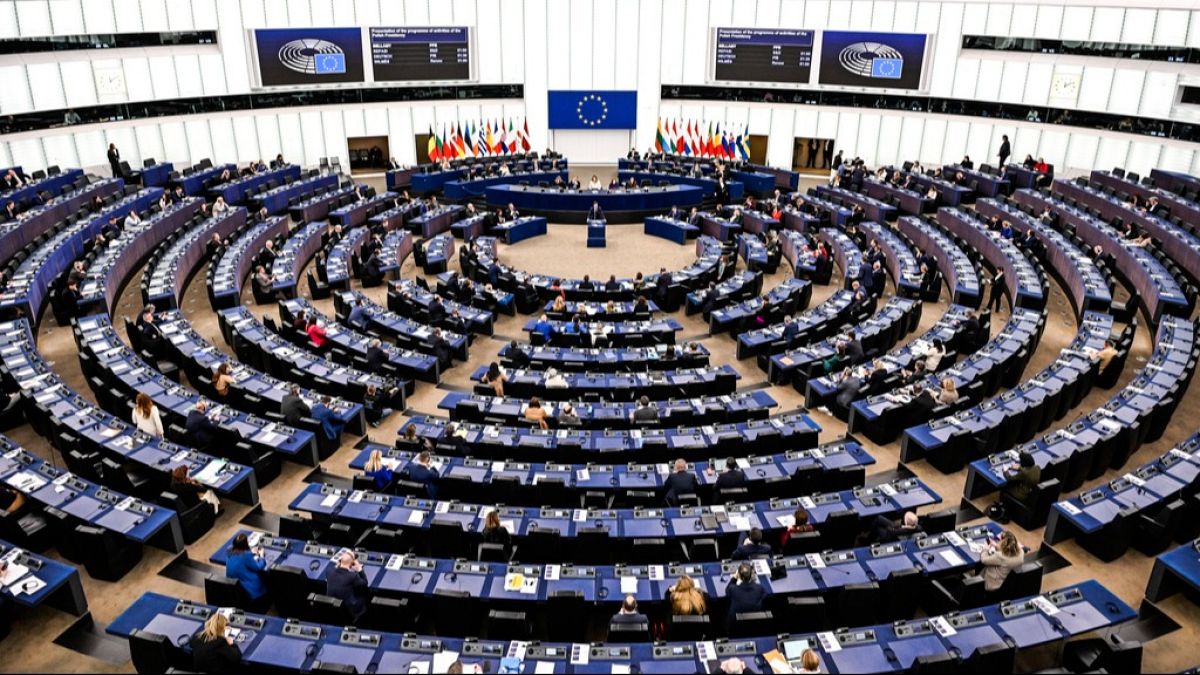
 World1 week ago
World1 week agoBelgium requests lifting of MEP immunity to investigate Huawei scandal
-

 News1 week ago
News1 week agoVideo: Trump Repeats False Claims to South African President












